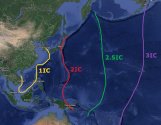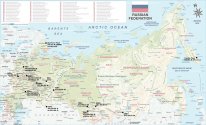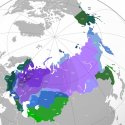That's not my argument. Read again 2nd to 5th paragraph but not as separate statements but as single continuous line of reasoning.
It's the problem of troop morale like when you order an infantry charge at enemy positions defended by artillery but have no artillery of your own. The effectiveness of that charge is determined by morale, and morale is determined by the emotional state of the troops. Planners know this and also can relate to this - hence "emotional reasoning".
That is essentially what I described, but fine, to go by how you phrased it here and in paragraphs 2-5 of that reply -- my point is that I disagree that the case for H-20 can be argued to be driven by "emotional reasoning" on the basis of "morale".
First of all the requirement is a "want" category not a "need" category in military terms and becomes "need" once it goes out to decision makers who approve the budget.
Secondly we're talking about a delay of approximately five years which will affect the extremely volatile period between 2025 and 2029 i.e. the next US presidential term. That factor adds weight to the rumour.
Our perceptions of what is a "want" and a "need" probably depends on how we view the strategic priorities of China/PLA.
And yes, I am aware that we are talking about a prospect of a delay of five years -- and yes that will affect the volatile period between 2025-2029.
There are a number of platforms during the 2025-2029 period where procuring them into commissioning in that period is unwise -- one of those are additional CVs/CVNs.
However I view H-20 as being a platform where entry into service in the 2025-2029 period as not only valuable, but also very important into the immediate post 2030 period. After all, a five year difference in time scale means a big difference of in service aircraft in the early 2030s, for a very important platform.
While your focus is naturally China, mine was Russia and I've been watching the developments in the theater and the ongoing war very closely since before 2014. All I can say is that the war blew everyone's expectations out of the water and often in ways that very few people expected. Most of it is very mundane and won't draw attention from military (equipment) enthusiasts but nevertheless it consumes resources in the same way that a flashy program like H-20 or J-20 do. It's true for NATO as well as for Russia and I refuse to acknowledge that China miraculously made all the right calls. Some decisions that we've been able to see were correct, but some were not (in retrospect) and now everyone has to adjust on short notice. This urgent necessity would very likely be responsible for delay to H-20 if it occurs.
Right now PLA is preparing to fight without the H-20 and that is likely the current plan for the rest of the decade as fielding a completely new platform requires testing and development of tactics which takes time. USAF has the advantage of having experience with both proper long-range bombers like B-52 and B-1 and VLO bombers like B-2. PLAAF/PLANAF have experience with H-6 which has half the range of B-52 and limited aerial refueling opportunities. Aerial refueling is crucial because of larger payload, lower altitude and a flight path that is more complex to avoid detection. This means that the likelihood that PLA would have H-20 available in any meaningful number (16+ in active service) before 2029 is extremely low. Because of that and the Ukraine war strategic priorities could have been shifted and I would consider that delay a prudent decision if it came to that.
On the other hand, my view is that even a relatively low number of H-20s before 2029 (such as 10-16) could play an outsize role in a westpac high intensity conflict if it occurred due to the unique mission profile they would offer. More improtantly, in the immediate post 2029/2030 period, if peace occurs, then having it ready by then means they are able to upscale the production pace of H-20 to get more into service in the early 2030s.
C-5 or An-124 are not a global capability but an oversize capability. There are certain payloads that can't be airlifted by Y-20 at all - often due to volume rather than mass - and others that can't be airlifted without excessive range loss and those payloads may or may not be relevant to whatever CMC is assuming as likely to occur in some future timeframe.
Everyone is focusing on WestPac but since Russia's terrible blunder in Ukraine a different strategic scenario has become a possibility - a proxy land war between US and China in/around Russia and/or in the Middle East.
This scenario has an added benefit of entangling the EU and potentially shifting the dynamic away from WestPac to Eurasia in part or in entirety. That's obviously Washington's highest preference because WestPac conflict is a death sentence to US in economic terms while Eurasian conflict is economically manageable because it drags everyone down with the US. Hegemonic conflicts are about survival of spheres of influence, not survival of the state. Spheres of influence are all about relative strength of countries, not absolute. If everyone is weaker, change may not occur or may not occur to the same extent.
One hint that this may be a possibility is the scale of military expansion that Poland is currently engaged in. While it is still a hypothetical until the election later this year it may be an indication that another land war is envisioned in the timeframe of about one-two decades. Considering rational forecasting and Russia's current economic condition the kind of army that Poland is planning is excessive. And certainly China using Russia as a convenient proxy is a possibility due to the fundamental change in the relationship between the two.
In such scenarios being able to quickly shift large payloads at significant distance is very useful and China lacks that capability. At the same time H-20 stops being very relevant for many reasons that I won't get into here. In proxy wars direct kinetic power projection is not a priority like in direct conflicts such as WestPac.
Another thing that suggests alternative scenarios is AUKUS. The planned SSN base in Australia is at the coast Indian Ocean. Even for SSNs that plays a role. Paired with the timeline that indicates something different that most people focus on today - at least for me.
WestPac is largely decided in terms that matter to Washington so I would be surprised if there weren't efforts to invent a more convenient alternative.
I agree that large transports like C-5/An-124 are for outsize payloads, but at the same time their use is in longer distance transport missions usually (I used the term global, but to be more accurate at minimum they are usually transcontinental distances).
If you view China as needing to intervene and deploy in Russian territory or central asia or the middle east for a proxy war, then yes a large strategic transport would be very useful. But I also think China would be very hesitant to get involved in such a manner, and the sheer number of large strategic transports needed to be useful (and the requisite expeditionary basing, airspace passage rights, and expeditionary force structure generation) is such a massive task that it amounts to adding an entirely new strategic mission to the PLA as a whole.
And if Russia was at risk of experiencing instability such that it becomes the theater of a proxy war, then China has much bigger issues to worry about that cannot merely be dealt with by a fleet of C-5 equivalents.
Nobody is claiming otherwise. I only provided an explanation for why the delay would occur if at the same time J-20 and Y/YY-20 were given greater priority - as Deino's follower suggested. Because a delay to H-20 without boosting J-20 and Y/YY-20 is better explained by technical challenges. However when viewed in tandem with that specific choice it opens up a possibility for rational planning. I gave my understanding of what could be the cause in such scenario.
Also this is another argument in support of calculated delay:
The only situation where that doesn't apply is a pre-emptive strike which is a strategic consideration. If CMC decides that it allows US to take that position as more convenient strategically then no first strike is necessary and VLO loses its most crucial advantage while numbers matter always.
No offense, but there may be all manner of valid explanations for why H-20 could be delayed if it is.
There is no particular reason to give extra credence to the message Deino received unless there is a reason to believe they have a viable track record.
We can literally brainstorm any number of equally legitimate sounding theories ourselves.



